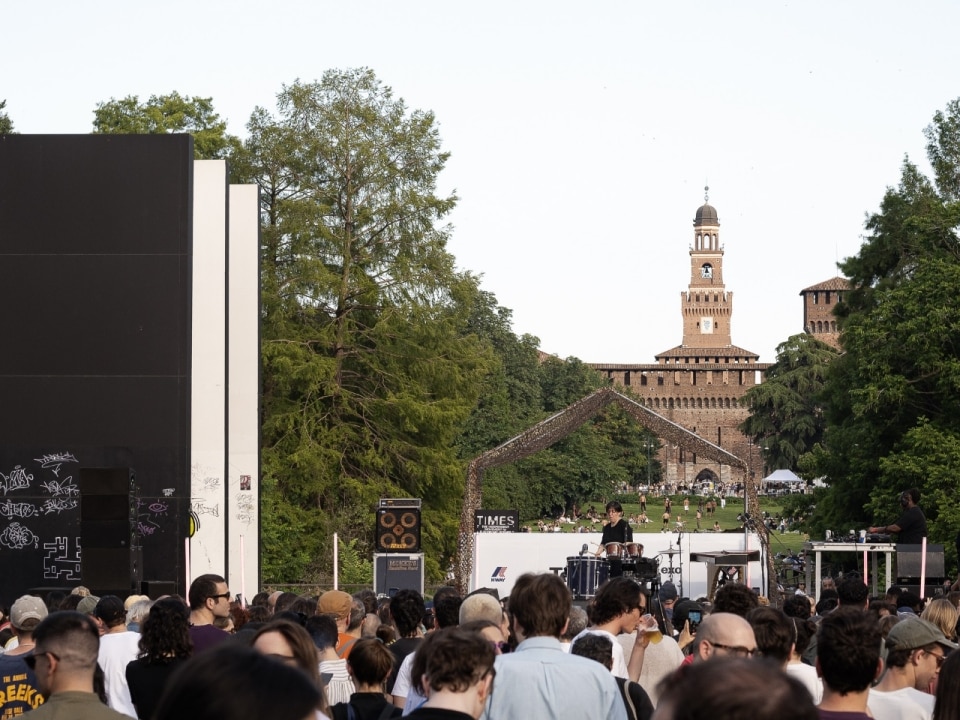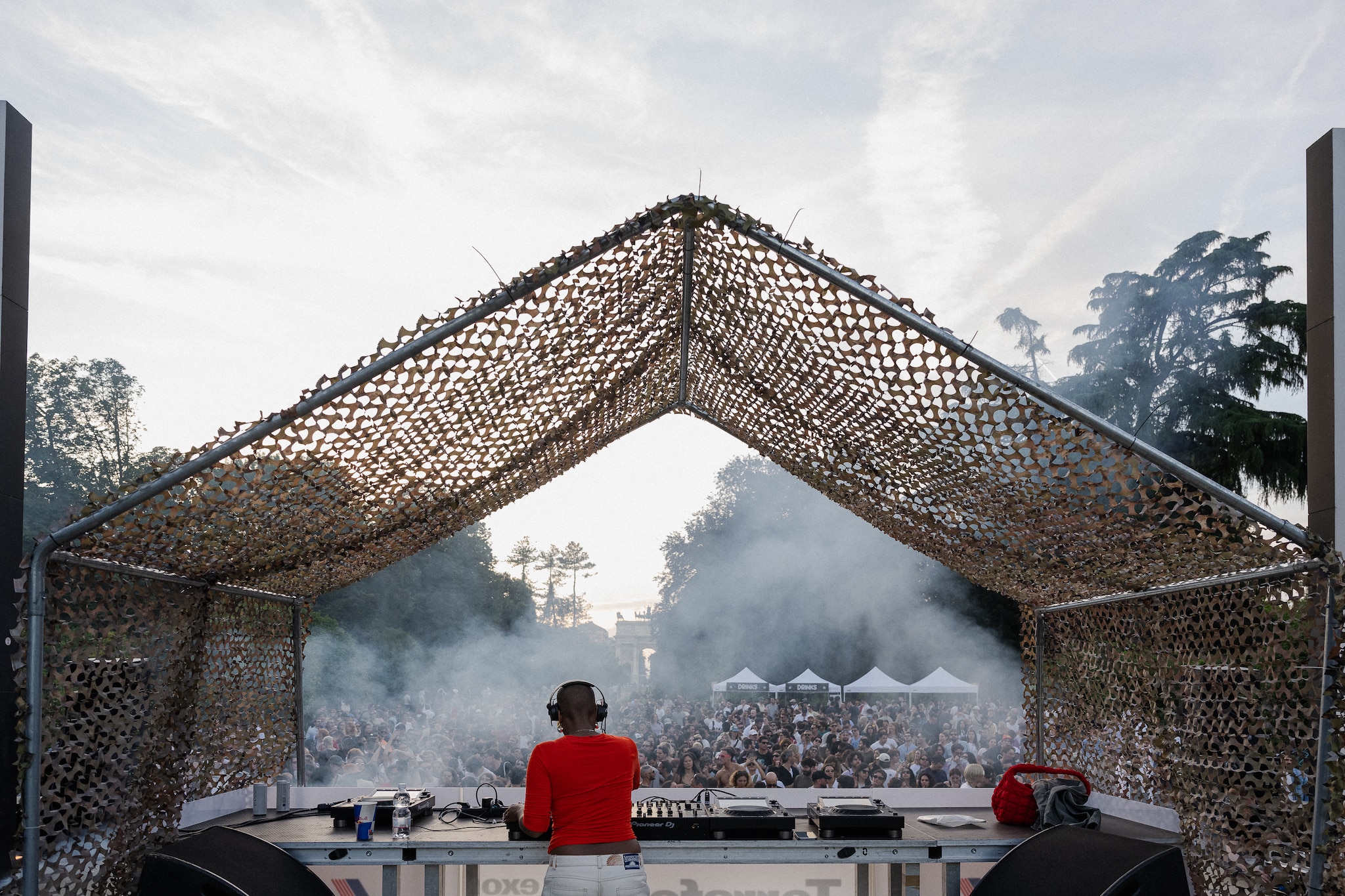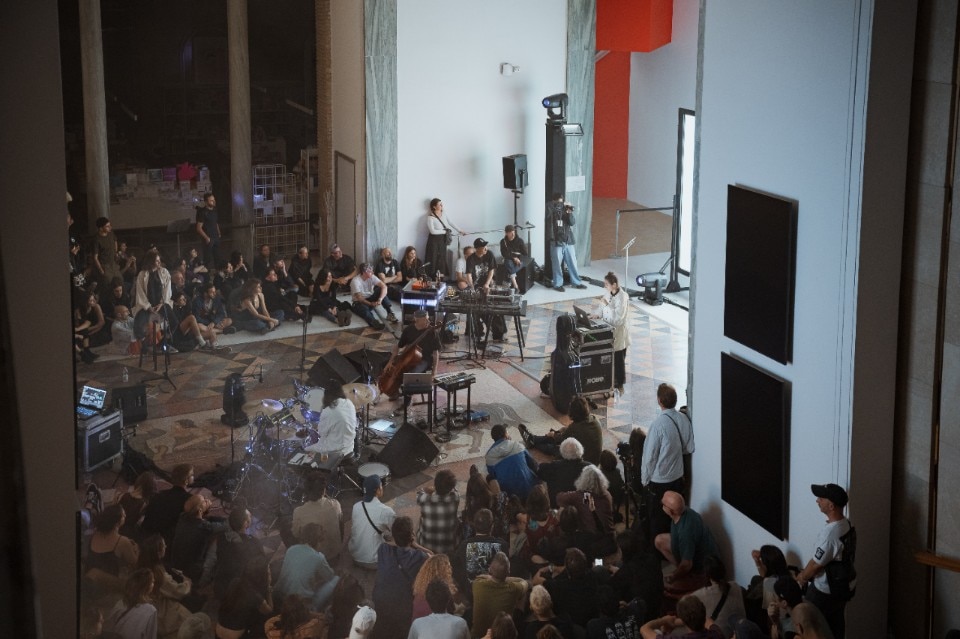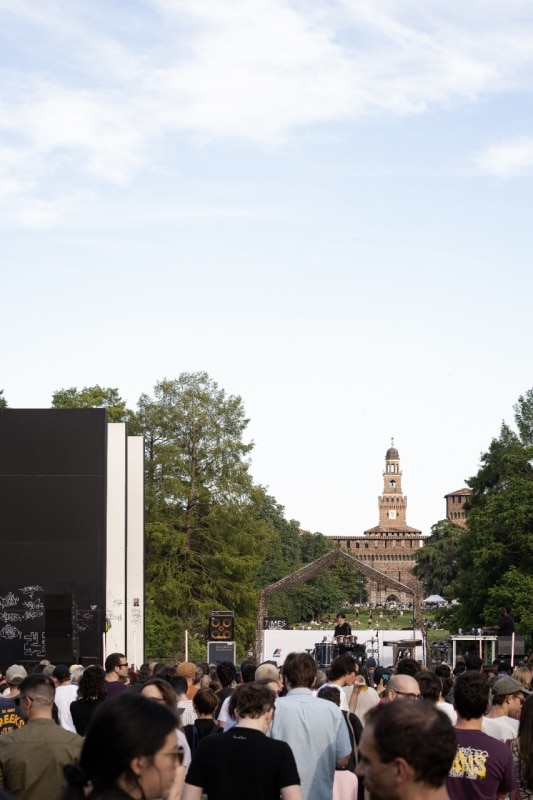An urban festival, an exhibition platform, an open-air conference, and a sustainable regeneration experiment: Terraforma has never just been about listening to music. In its eleven-year history, since its debut in 2014, the cultural event conceived by Threes Production – the Milan-based creative agency also behind Nextones, the festival held in the quarries of Val d’Ossola – has offered much more than just a line-up. It has hosted multidisciplinary projects capable of bridging music with architecture, ecology, performance arts and – why not – even geopolitics.
For the second consecutive year, Terraforma Exo returns to inhabit the entire Parco Sempione from June 28 to 29, 2025, spreading across the Teatro Continuo by Alberto Burri, the Torre Branca, Palazzina Appiani, the Garden of Triennale Milano – with its new sound machine dedicated to musical experimentation, Voce – and, for the first time, the Castello Sforzesco as well. A project that, in the words of co-founder and artistic director Ruggero Pietromarchi, engages with the city by turning it into “an open-air laboratory, where sound is not just an aesthetic experience, but a political act, a gesture of care, and a proposal for a new form of urban coexistence.”
With a selection of three projects, Domus explores how this “expanding sonic map” builds connections with architecture in this edition – not only with the tangible structures of the city, but also with an imaginative architecture shaped by sound. An architecture capable of “terraforming new worlds” or of resurfacing those too often forgotten.
1. Forensic Architecture’s talk: towards a political architecture of sound
The research group from Goldsmiths University, led by architect Eyal Weizman, represents one of the most radical and innovative uses of contemporary architecture. The talk scheduled at 6:00 PM on June 28 at the Voce space in Triennale Milano is a rare opportunity to hear their testimony live in Italy.
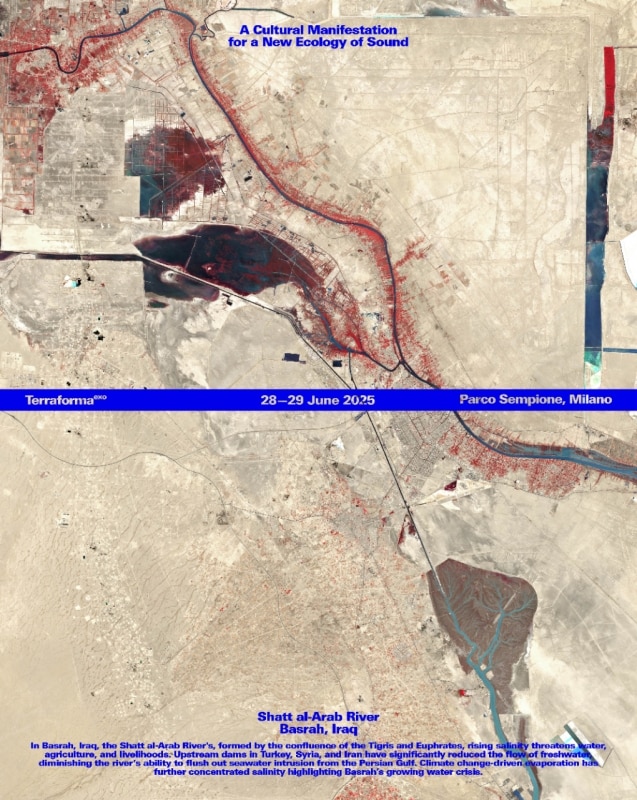
Since 2010, Forensic Architecture has been using advanced techniques — from 3D modeling and satellite image analysis to “situated testimony” from ecosystems — to meticulously reconstruct violations of international law. This approach, known as “forensic architecture,” is designed to produce evidence for use in courts around the world, in cases that challenge official narratives and support justice claims from oppressed peoples. Eyal Weizman has authored some of the most insightful contributions on the Palestinian issue – from Spaziocidio, published in Italy in 2022, to Hollow Land: Israel’s Architecture of Occupation (2009), which explores the territorial control strategies used by Israel in the occupied territories.
On this occasion, Forensic Architecture’s presentation at Terraforma will delve into one of their most recent investigations: the German colonization of Namibia, a process that culminated – between the late 19th and early 20th centuries – in the genocide of the Herero and Nama peoples, as well as in an ecocide of natural resources that continues to affect the country’s ecological instability today.
2. The immersive sound piece “The Drum and The Bird” by Forensis & Bill Kouligas gives voice to a lost Namibia
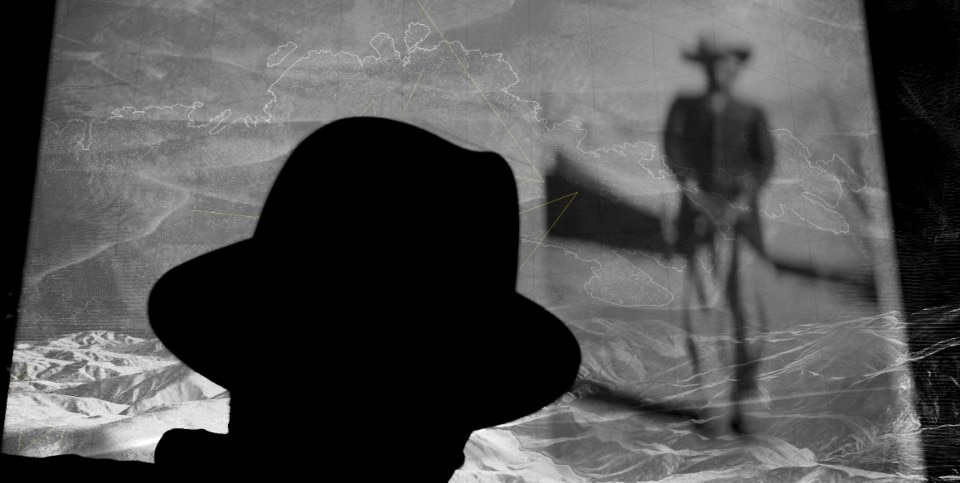
But what does all this have to do with sound? Many of you will remember the stunning Nike installation for Capsule during Milan Design Week, created by Bill Kouligas, sound artist and founder of the experimental label Pan, who has long explored the boundaries between sound, visual art, and critical practices. At Terraforma Exo, Kouligas presents a collaboration with Forensis – the Berlin-based sister agency of Forensic Architecture. Together, they bring the forensic investigation conducted in Namibia into the festival line-up, in the form of an immersive sound experience. In “The Drum and The Bird”, first presented at Berlin Atonal in 2024, generative environmental audio, oral testimonies, and spatial-visual modeling intertwine to “expand the field of listening, making it a critical, memorial, and relational tool.”
It was not only human voices that were silenced by German colonialism — nature itself was also prevented from speaking its own language. Often, it is in these sonic omissions of the landscape that forensic investigation finds the only remaining traces that violence occurred.
What resounds in “The Drum and The Bird” are the forgotten voices of sand, water, wind, trees, sharks, and humans — the actors of the Namibian landscapes, carrying memories that transcend colonial amnesia. If you want to hear what these “living archives” sound like, the appointment is from 11:00 PM to midnight on Saturday, June 28, at the Garden of Triennale Milano.
3. The futurity of memory in “The Talk” by Heith, James K, Günseli Yalcinkaya, and Andrea Belosi
Third in order but not in intensity, “The Talk” is a surreal panel conceived by electronic musicians Heith and James K, in collaboration with artist and researcher Günseli Yalcinkaya, who specializes in technological folklore, with original set design by Andrea Belosi. The performance weaves together real-time AI-generated synthetic soundscapes, spoken word segments, and scenography that borders between physical space and digital dystopia. It draws inspiration from the Antikythera mechanism, a mechanical calculator that once predicted the movement of celestial bodies, and is therefore considered by many to be the first artificial computer ever designed.
Co-commissioned by Terraforma together with Sónar, Nuits Sonores, and Reworks, “The Talk” sheds light on the myths and fears surrounding new technologies, forging timeless links between folkloric memory and speculative futurism. It runs for one hour, from 9:30 PM to 10:30 PM on June 28, in the Garden of Triennale Milano.
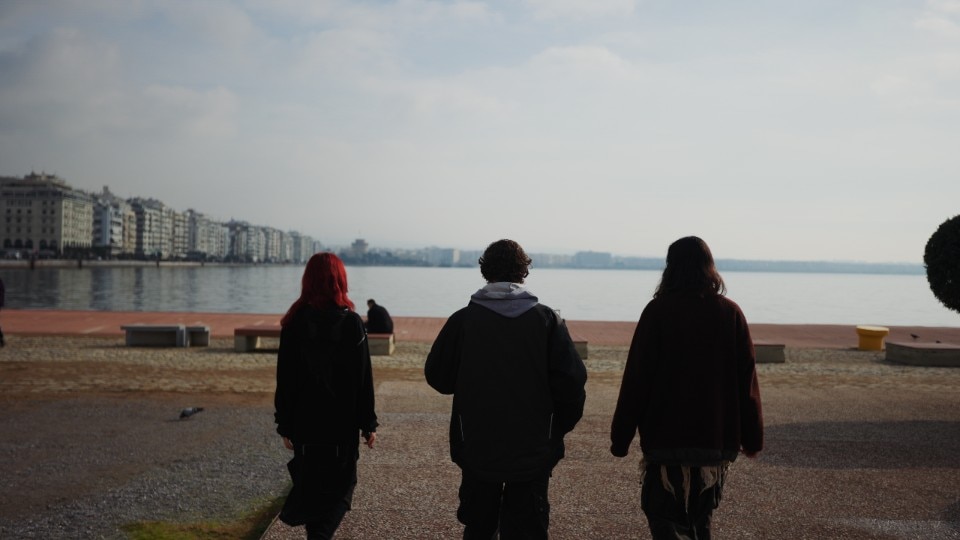
Opening image: Terraforma Exo 2024. Photo Stefano Mattea. Courtesy Terraforma Exo


